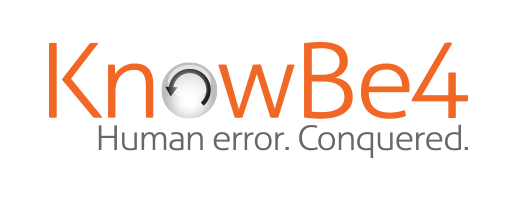
Notes and lessons on the hybrid war. Update on Zimbra exploitation. Microsoft fixes misconfigured storage. The state of the cyber workforce. Trends in phishing and ransomware.
Dave Bittner: DDoS as misdirection. NSA's six lessons from cyber operations observed in Russia's war against Ukraine. Advice from CISA on Zimbra. A misconfigured Microsoft storage endpoint has been secured. Notes from a study on the cybersecurity workforce. The cost to businesses of phishing. Betsy Carmelite from Booz Allen Hamilton on managing mental health in the cyber workforce. Our guest is Ismael Valenzuela from BlackBerry with insights on "The Cyber Insurance Gap." And updates to the ransomware leader board.
Dave Bittner: From the CyberWire studios at DataTribe, I'm Dave Bittner with your CyberWire summary for Thursday, October 20, 2022.
DDoS as misdirection.
Dave Bittner: Deutsche Welle reports informed speculation that Killnet's recent distributed denial-of-service (DDoS) attacks against Bulgarian government targets may have been misdirection, designed to draw attention from the real Russian goal, which may have been espionage. If that's the case, the ultimate goal is probably not simply Bulgaria, but rather NATO. Compromise of Bulgarian systems could enable Russian cyber operators to pivot into the broader NATO networks to which Bulgaria is connected. Some Russian official and semi-official discussion of the cyberattacks against Bulgarian government sites was retaliation for Bulgarian cooperation with and participation in Ukraine's strike against the Kerch Bridge. Deutsche Welle dismisses this as easily debunked nonsense. The attackers had other phish to phry (ph).
NSA's six lessons from cyber operations observed in Russia's war against Ukraine.
Dave Bittner: Rob Joyce, head of the U.S. National Security Agency Cybersecurity Directorate, spoke Tuesday at the Mandiant Worldwide Information Security Exchange in Washington, D.C. He drew particular importance to information sharing by and with the private sector, CyberScoop reports. He also drew six early lessons that may be learned from the conflict so far. Meritalk summarized those lessons as follows. First, both espionage and destructive attacks will occur in conflict. Next, industry has unique insights into these conflicts. Sensitive intelligence can make a decisive difference. You can work and develop resiliency skills. Don't try to go it alone. And you have not planned enough for the contingencies.
Dave Bittner: The advice he offered the private sector came from NSA's playbook. First, harden; invest in the basics and hardening your systems and networks. Actively defend; take an active stance against adversaries, not a passive one. Contest; impose costs on malicious actors. And scale; collaborate with industry. More lessons will emerge as the war is studied. In the meantime, Director Joyce has offered a first draft of its history.
Zimbra exploited: advice from CISA.
Dave Bittner: CISA has updated its advisory concerning the exploitation of several vulnerabilities in Zimbra. The update includes not only additional technical details on the malicious files being used in exploitation, but also a summary of best practices to mitigate the risk. See cisa.gov for the details.
Misconfigured Microsoft storage endpoint secured.
Dave Bittner: Microsoft has released the results of its investigation into a misconfigured Microsoft storage endpoint, which exposed some business transaction data corresponding to interactions between Microsoft and prospective customers, such as the planning or potential implementation and provisioning of Microsoft services. Microsoft has since secured the server. Microsoft, which we note in disclosure, is a CyberWire partner, explained the implications of the data exposure, stating, the business transaction data included names, email addresses, email content, company name and phone numbers and may have included attached files relating to business between a customer and Microsoft or an authorized Microsoft partner. The issue was caused by an unintentional misconfiguration on an endpoint that is not in use across the Microsoft ecosystem and was not the result of a security vulnerability. We are working to improve our processes to further prevent this type of misconfiguration and performing additional due diligence to investigate and ensure the security of all Microsoft endpoints.
Cybersecurity Workforce Study released.
Dave Bittner: ISC Squared has released its 2022 Cybersecurity Workforce Study. The study shows that the cybersecurity workforce globally is at an all-time high, with an estimated 4.7 million professionals in the field. But data show that 3.4 million more workers are needed in the field to be effective. Three-quarters of respondents reported strong job satisfaction and feeling passionate about their work, but 70% of respondents report feeling overworked. Sixty-eight percent of employees that had low experience ratings have said that culture affects their effectiveness in security incident response. Over half of workers also reported that they would switch jobs if remote no longer is an option. Sixty-four percent of respondents seek out new certifications in order to grow their skills and stay current with trends in cybersecurity. Twenty percent say that they believe that their company would raise the security budget following a breach, but only 16% say that the funding would go to more staffing. Sixty-one percent of cyber professionals surveyed are concerned primarily with risks in newer technologies.
The cost of phishing.
Dave Bittner: Ironscales published a report this week conducted by Osterman Research that details the cost of phishing to business. The purpose of the study is said to investigate direct costs borne by organizations in mitigating the phishing threat and to explore expectations about how phishing will change over the next 12 months. It's noteworthy how much of the cost of a phishing attack is imposed in terms of simple time and labor. Phishing costs to businesses are not just financial in nature, but many security and IT teams have to dedicate time to resolving phishing attempts and attacks. Seventy percent of organizations report spending 16 to 60 minutes on each fishing email from discovery of the email to removal.
Dave Bittner: A composite IT and security professional was found by the research to cost $136,000 in salary and benefits, and the cost of a single phishing email averaged out to be just over $31, as the average time spent on a phishing email is 27 1/2 minutes. The research also found that IT and security professionals reported that phishing-related activities took up about one-third of their work time, which would equate to about $46,000 per year for the calculated composite security professional. Phishing, of course, is not going away. Most organizations expect it to increase over the coming year. Phishing has also expanded beyond email, as at least half of respondents report seeing phishing attacks in messaging apps, cloud-based file sharing platforms and text messaging services. So stay alert, stay skeptical, and stay safe.
Intel 471 releases quarterly ransomware report.
Dave Bittner: Finally, a look at the ransomware leaderboard as it shaped up during the third quarter. Intel 471 released a report today highlighting ransomware activity in Q3 2022. Four hundred fifty-five ransomware attacks were observed in this quarter, which represents a decrease of 72 over the last quarter. Ransomware continues to have a global impact. Here, in order, are the ransomware strains with the biggest criminal market share. LockBit 3.0 was found to be the most prominent ransomware variant, coming in at 192 detected breaches. Professional services, consulting and manufacturing were found to be the most impacted industries by LockBit. LockBit's builder was leaked on Twitter in September of this year, and it's possible that a decrease will be observed in LockBit use in the fourth quarter.
Dave Bittner: The Black Basta ransomware placed second. It was used against 50 organizations this past quarter. Consumer and industrial products were the most targeted industry by the ransomware, and the U.S. accounted for 62% of all attacks. This ransomware took Conti's spot as the second most observed ransomware following its dissolution. Forty-two attacks were seen by the Hive ransomware group in the third quarter, and they most impacted the U.S. and U.K. Consumer and industrial products were the most affected sector by this ransomware. In August of this year, an alleged Hive threat actor revealed phishing emails are the initial attack vector. ALPHV ransomware was observed in use in 30 incidents this quarter. Real estate and professional services and consulting were the most impacted sectors. In September, the supposed leader of the ALPHV ransomware-as-a-service affiliate program claimed the group targeted many systems of critical infrastructure.
Dave Bittner: Coming up after the break, Betsy Carmelite from Booz Allen Hamilton on managing mental health in the cyber workforce. Our guest is Ismael Valenzuela of BlackBerry with insights on the cybersecurity insurance gap. Stay with us.
Dave Bittner: BlackBerry recently published a report titled "The Cyber Insurance Gap: What Is It and How Can We Close It?" For insights on the report, I spoke with Ismael Valenzuela, VP of threat research and intelligence at BlackBerry.
Ismael Valenzuela: The reality is that this is not very different from what we have seen for many years in the world of compliance, right? When you approach cybersecurity as compliance, it's just one more thing you're doing to just, like, feel at peace or, you know, let's say, to ignore things that you should not be ignoring because you have a piece of paper that gives you some peace of mind. And the reality is that cybersecurity is not about just going through controls and just saying, OK, check, check, check. You have that, right? This is a very dynamic world. It's always been. And as the business increases for cybercriminals, there's more people into the business. This is a reality with any economy where there's money. Like, there's more people jumping into it. And unfortunately, there's a lot more bad people jumping into this that probably, like, defenders that are able to counteract.
Dave Bittner: So is part of the issue here the expense of these policies?
Ismael Valenzuela: It's probably lack of knowledge that, you know, this is something available in some cases - probably smaller organizations, right? Obviously, bigger organizations are aware of this. One of the things we mentioned in the report is that it's typically the same broker that offered this catalogue of services. Bigger organizations would definitely know that this exists, but it could be definitely cost. One of the things that we highlight in the survey is that the cost of some insurance is increasing as there's more and more attacks, especially the ransomware attacks. It could be maybe the inability to get coverage because the organizations - not all organizations have or meet the basic criteria, the minimum number of controls that they need to obtain one.
Dave Bittner: Yeah, that's a really interesting point. I mean, I suppose in some ways cyber insurance is driving organizations to up their game when it comes to a lot of these basic cyber hygiene issues.
Ismael Valenzuela: You would think so. That's ideally what we want to see, right? We want to see this as a compliance. That's the good thing about compliance, too. I keep comparing those two things. But to me, it's kind of the same thing, right? Somebody is pushing you to do something that you should be doing regardless. And that's good. All right. So, for example, you don't have EDR. You need to have EDR - right? - endpoint detection response - to be able to monitor your endpoints. In some cases, it could even, you know, lead up to you don't have enough resources to monitor these solutions a real-time basis because that's what they require. Well, if you don't have your own SOC because you're a smaller organization, you need to have a managed detection and response - right? - type of service. You have to augment your capabilities. All of these things are good.
Ismael Valenzuela: There's also the other side of the coin, which is some organizations could use this as an excuse to not invest on things that they should be investing based on their threat model. And that's - I think that's the main gap here, that in many cases, these insurance companies are going to come and require a number of controls that you could have in place. But just as with PCI or HIPAA regulation or other type of control-based frameworks, the fact that you have that doesn't talk about efficacy, doesn't talk about how well-prepared you are to anticipate, to withstand - right? - to resist and to recover.
Dave Bittner: What are your recommendations, then? I mean, if I'm the person in my organization who's responsible for finding the right cyber insurance for us, any words of wisdom there?
Ismael Valenzuela: You know, first of all, if I would be the person doing that internally and that typically comes because of a need - a business need - hey, we need to have insurance because of this, right? You know that to continue conducting business, or in order to have access to this partnership or this contract or - once again, it's like compliance, right? You use it to go beyond what just the controls - the framework is requiring you or the insurance company is requiring you to do. That would be one recommendation, right? Use this to do the right thing, but not necessarily just to do the minimum to comply with that and just leave it because that's usually not enough, right? That minimum is typically not enough.
Ismael Valenzuela: The second thing would be to make sure that you've read the fine print and clarify what, you know, coverage for a loss means. What we have found with this survey is that, in many cases, organizations thought that certain costs would be covered. And there's a case that happened recently in Australia that illustrates this, where a company that was victim of a ransomware attack - they found out that the cyber insurer was - they were not covering the cost of doing incident response. And as we know - right? - typically, you would have an organization will come in and trying to find out where the attacker is, what's the scope of the attack, trying to contain the bleeding and then helping you to recover.
Ismael Valenzuela: They will not be covering that. They will not be covering the cost of forensics. And as we know it, you know, forensics is what uncovers the evidence or unearths the evidence that will tell you what's the root cause, right? Why did this happen? And that's what you need in order to learn - in order to improve, right? And so all of these things are necessary. In some cases, some insurance is not covering that. We don't want to have these type of surprises after the fact, so it's good to do that dig-in before jumping into this, right?
Dave Bittner: That's Ismael Valenzuela, VP of Threat Research and Intelligence at BlackBerry.
Dave Bittner: And I'm pleased to be joined once again by Betsy Carmelite. She is a principal at Booz Allen Hamilton and also their federal attack surface reduction lead. Betsy, it's always great to welcome you back to the show. I want to touch base today on the issue of mental health in the cyber workforce, something that I know is important to you from a manager's point of view. What can you share with us today?
Betsy Carmelite: So Dave, the always-on cybersecurity environment - and that's whether it's closing tickets, tracking open tickets, analyzing data, writing reports, answering Slack messages - all of that leads to burnout among cybersecurity analysts. And there's one major contributor. It's cognitive overload. And we've seen reports that nearly half of senior cyber professionals in the last year have considered quitting the industry altogether because of that stress, according to a recent survey. And a similar percentage of those professionals in the industry know someone who has quit.
Dave Bittner: So what is leading to this? I mean, are we understaffed? How, from a manager's point of view, where are we coming up short?
Betsy Carmelite: Yeah. So my Booz Allen colleague Mike Saxton and I - we both have been in the trenches and managed cyberdefensive operations teams, and we've seen a lot of what works and doesn't work. So this will come at an angle of what's causing this, but also, you know, how we can better support cybersecurity teams and reduce the most common sources of that cognitive overload. So first, it's really important to establish a clear strategy and team structure. Companies can combat cognitive overload by setting a clear cybersecurity strategy for the team, and workers should have a strong understanding of their role, their responsibilities, what their goals are and where they fit into that larger strategy.
Betsy Carmelite: And so for example, assign areas of specific infrastructure or threat groups for certain people to focus on. And this way, instead of feeling like a few dozen workers are in charge of defending an entire organization, they view themselves as a structured force multiplier. This also shows that the organization recognizes that focus and a training process will pay off in the long run. So that's one way.
Betsy Carmelite: Secondly, we look at really the need to understand the limits of technology. There has really long been a misconception that one singular tool or product can get the job done, but analysts are the ones responsible for interpreting the data, coming out of those tools and making the decisions. I heard the other day that a human makes about 35,000 decisions a day, and I can't imagine what that number is for a cybersecurity analyst.
Dave Bittner: (Laughter) Right.
Betsy Carmelite: It just blows the mind.
Dave Bittner: They probably say, oh, that's adorable. Yeah.
Betsy Carmelite: Yeah, exactly.
Dave Bittner: (Laughter).
Betsy Carmelite: And so we really need to listen to our team's feedback to cut out the extraneous security tools or use them better to solve the challenges. More technology won't solve the issue unless we listen to what the analysts have to say. The last thing that I think is really critical is recognizing cybersecurity as human side. And leaders should really engage with their cybersecurity teams, encourage them to take a breather, understand it, understand when their needs require them to help lessen the load. And if they can't take care of their needs, they're certainly going to lack motivation to be on that team. It's as simple as that. When you have time spent away - and I want to talk about that in a couple of ways - that can make their daily tasks more fulfilling. So first, there's true time off, you know, unplug, walk away to get the real break that your brain needs.
Betsy Carmelite: And then secondly, find or offer creative in different ways to be in the workspace. For example, I'm going to use this time with you on this podcast. This is something I love. It keeps my mind fresh. It allows me to think in different ways. There's an excellent book by Daniel Kahneman called "Thinking, Fast And Slow" that comes to mind here in my daily delivery. I am just making decisions right and left for client missions, for my team members. But when I come here, I can focus on a thought piece that I want to share with you. My other colleagues volunteer with cyber nonprofits or at cyber conferences. It redirects the mind and really generates productivity in a less stressful or more fulfilling way.
Betsy Carmelite: And then lastly, from the management side, when the manager models and offers the opportunity to have balance, that signals that the company has made the staff's mental health a priority, and helps them recognize when they're fast approaching burnout. So being attuned to your team. And it's as simple as asking, how are you managing? And often, it needs to be that deliberate to find out.
Dave Bittner: What about setting boundaries? You know, I hear folks talk about protecting their weekends, turning off the phone or saying, you know, I'm - I am not available during these hours. I know that's always not realistic for all positions in cyber, but it strikes me that is as cultural thing, it's something that we should probably strive for.
Betsy Carmelite: I would agree with that. I know with my own teams - and again, this goes back to what I model - unless there is a real need for me to be emailing them about a crisis or an important client decision that has to be made after 6:00 or on the weekends, I'm going to maintain those boundaries as a matter of practice. When I do need to discuss with them, hey, I'm going to need you to put in just a couple hours this weekend, I'm very deliberate about what we need to have them do. We have a huddle. And we're very intentional about what that time is going to be spent doing. And that way we can, you know, while it's not ideal to be working on a weekend, and being protective of those boundaries is absolutely critical, at least we're very focused. And we know what we need to accomplish.
Dave Bittner: Yeah. So, I mean, communication is really key here.
Betsy Carmelite: Yes, absolutely. And it's two ways. It's communicating that to your team. And you have to listen to what your teams are up against. You have to listen to what's working and not working, and then work within that environment and help them out.
Dave Bittner: Well, Betsy Carmelite, thanks for joining us.
Betsy Carmelite: Thanks, Dave.
Dave Bittner: And that's the CyberWire. For links to all of today's stories, check out our Daily Briefing at thecyberwire.com.
Dave Bittner: The CyberWire podcast is proudly produced in Maryland out of the startup studios of DataTribe, where they're co-building the next generation of cybersecurity teams and technologies. Our amazing CyberWire team is Elliott Peltzman, Tre Hester, Brandon Karpf, Eliana White, Puru Prakash, Liz Irvin, Rachel Gelfand, Tim Nodar, Joe Carrigan, Carole Theriault, Maria Varmazis, Ben Yelin, Nick Veliky, Gina Johnson, Bennett Moe, Catherine Murphy, Janene Daly, Chris Russell, John Petrik, Jennifer Eiben, Rick Howard, Peter Kilpe. And I'm Dave Bittner. Thanks for listening. We'll see you back here tomorrow.



